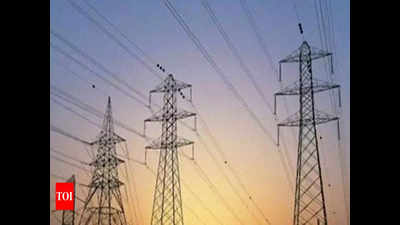- News
- City News
- bengaluru News
- A problem of plenty: Excess power could freeze new projects in Karnataka
Trending
This story is from November 26, 2020
A problem of plenty: Excess power could freeze new projects in Karnataka
As the war of words continues between ruling BJP and opposition Congress over Karnataka having excess power but purchasing it from central generating stations, the state government has decided to freeze further addition to existing generation capacity.

Representative image
BENGALURU: As the war of words continues between ruling BJP and opposition Congress over Karnataka having excess power but purchasing it from central generating stations, the state government has decided to freeze further addition to existing generation capacity.
According to senior government officials, the government took the decision based on the fact that existing power generation capacity itself is being under-utilised and further capacity needn’t be added till the end of next fiscal.“Karnataka has enough and more power generation,” said a government official.
The decision means that Karnataka will not set up new power projects or sign new power purchase agreements (PPA), but will run existing plants to the maximum capacity if required.
With an installed capacity of 28,000 MW, Karnatska can generate 11,336 MW from conventional energy and 3,368 MW from the Central Grid System while the remaining 13,544 MW is from renewable energy. As on November 25, the demand for power in Karnataka was 8,987 MW with only 4,152 MW generated by conventional sources, 3,449 MW from CGS and 1,390 MW by non-conventional resources.
“Using the merit order dispatch model, we tend to forgo the least expensive power for the most expensive, as we have to anyway pay for both. So, if I pay Rs 4 per unit of solar power and Rs 2 for thermal, then I’ll use solar power as I’ll use the most expensive to save wasteful expenditure of Rs 2 per unit,” explained the official.
Effectively, the government took a call to cut back on thermal and hydel power production as it was the least of the losses.
According to senior government officials, the government took the decision based on the fact that existing power generation capacity itself is being under-utilised and further capacity needn’t be added till the end of next fiscal.“Karnataka has enough and more power generation,” said a government official.
The decision means that Karnataka will not set up new power projects or sign new power purchase agreements (PPA), but will run existing plants to the maximum capacity if required.
With an installed capacity of 28,000 MW, Karnatska can generate 11,336 MW from conventional energy and 3,368 MW from the Central Grid System while the remaining 13,544 MW is from renewable energy. As on November 25, the demand for power in Karnataka was 8,987 MW with only 4,152 MW generated by conventional sources, 3,449 MW from CGS and 1,390 MW by non-conventional resources.
Only 1,500 MW is generated by 13 thermal units which saw a partial revival in the past couple of months. According to sources in the energy department, the mustrun condition in renewable energy PPAs have become the biggest burden for the government as it has been forced to cut back on conventional resources, including thermal and hydel plants.
“Using the merit order dispatch model, we tend to forgo the least expensive power for the most expensive, as we have to anyway pay for both. So, if I pay Rs 4 per unit of solar power and Rs 2 for thermal, then I’ll use solar power as I’ll use the most expensive to save wasteful expenditure of Rs 2 per unit,” explained the official.
Effectively, the government took a call to cut back on thermal and hydel power production as it was the least of the losses.
End of Article
FOLLOW US ON SOCIAL MEDIA











